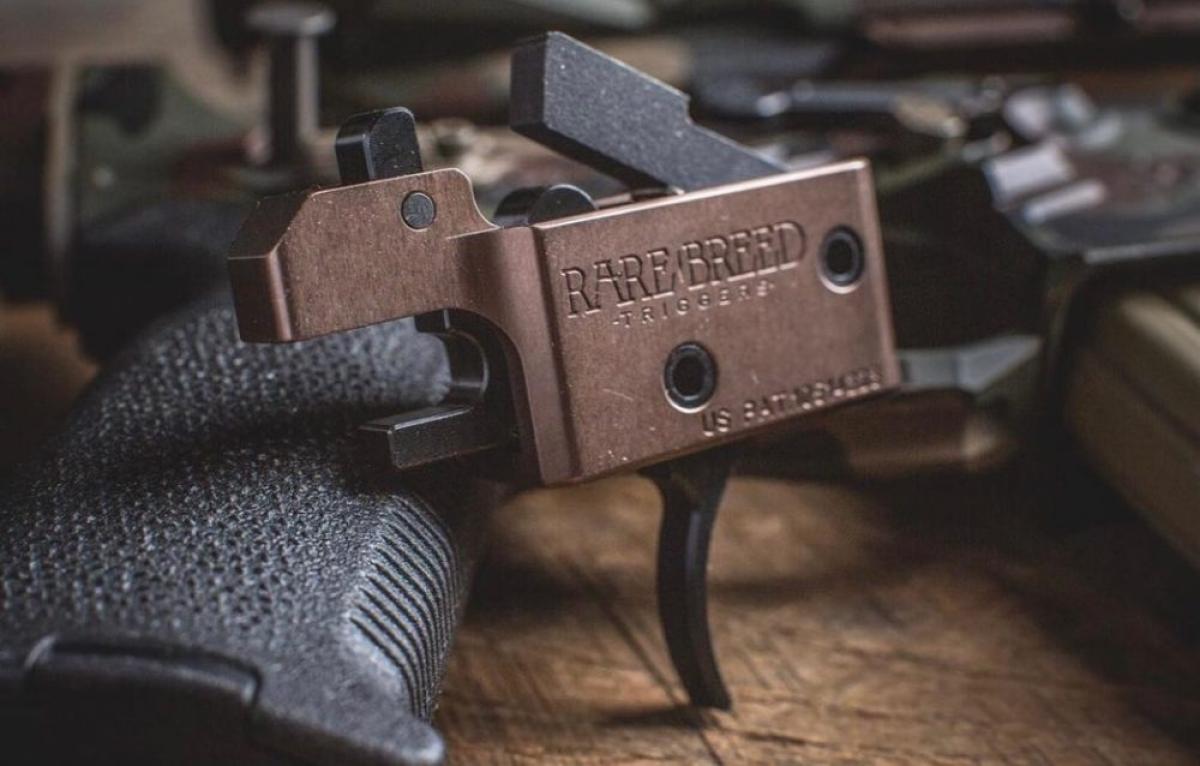Navigation
Install the NWFA app
How to install the app on iOS
Follow along with the video below to see how to install our site as a web app on your home screen.
Note: This feature may not be available in some browsers.
More Options
You are using an outdated browser
The browser you are using is likely incompatible with our website. We recommend upgrading your current browser or installing an alternative.
JavaScript is disabled
Our website requires JavaScript to function properly. For a better experience, please enable JavaScript in your browser settings before proceeding.
-
Join the #1 community for gun owners of the Northwest
We believe the 2nd Amendment is best defended through grass-roots organization, education, and advocacy centered around individual gun owners. It is our mission to encourage, organize, and support these efforts throughout Oregon, Washington, Idaho, Montana, and Wyoming.Free Membership Benefits
- Fewer banner ads
- Buy, sell, and trade in our classified section
- Discuss firearms and all aspects of firearm ownership
- Join others in organizing against anti-gun legislation
- Find nearby gun shops, ranges, training, and other resources
- Discover free outdoor shooting areas
- Stay up to date on firearm-related events
- Share photos and video with other members
- ...and much more!
ATF Proposes 2021R-05 Must Read
- Thread Starter The Resister
- Start date
Silver Lifetime
- Messages
- 42,776
- Reactions
- 111,086
The dumbing down of society and PC redefinition of words in action. This is why they have gone so hard after public education. This is why governor Brown-stain has passed laws that competency testing is no longer required for graduation. If people don't understand anything, they will fall for everything. We have gone from a rich and complete understanding of the English language, to a two-word vocabulary: "Hulk. Smash!"Explain what you mean.
A well regulated Militia, being necessary to the security of a free State, the right of the people to keep and bear Arms, shall not be infringed.
Because if a person understands the historical context of the word "regulated," it would mean "uniform, in proper working order, efficient and capable of performing its duties."
What they were saying was to the effect in laymen's terms, "How can we have a proper working militia if the right of the people to keep and bear arms can be infringed upon by the government, therefore, the government can't do that."
A person would either have to be agenda driven and bias, or not thoroughly adept in English, or history to make the argument that the founding fathers who literally just fought a war for independence from a tyrannical government, would say in the bill of rights that a government has the right to dictate how Americans can keep and bear arms.
- Messages
- 7,381
- Reactions
- 19,890
That's all well and good except for the concept of possessing the means and the ability and right to defend oneself was considered a right well before the American bill of rights.The verbiage of the 2nd amendment was developed by the anti federalists and was interpreted by the supreme courts until relatively recently to the extent that it guarantees the right of "the people" to raise and equip and deploy militias based upon the first clause both to protect themselves from outside invasion and as a means of protection from their own government. The founding fathers were very sensitive to standing armies and felt citizen militias were more inline with their philosophy of how the citizenry would protect their own lands and themselves from a central government. The "individual right" to self defense concept didnt come about until much later some would argue it didnt really get ensconced into law until this century. I feel they ( the government) would MUCH rather have the concentration upon an individual right than on the right of the citizens to regulate their own militia.
The concentration is on the individual already, because individual Americans make up "the people." You can't have a people apart from many individuals.
- Messages
- 446
- Reactions
- 532
- Thread Starter
- #25
This is incorrect. As most people know, the challenges come at the lower levels and that is the law unless and until the United States Supreme Court weighs in. Let's examine the facts:The verbiage of the 2nd amendment was developed by the anti federalists and was interpreted by the supreme courts until relatively recently to the extent that it guarantees the right of "the people" to raise and equip and deploy militias based upon the first clause both to protect themselves from outside invasion and as a means of protection from their own government. The founding fathers were very sensitive to standing armies and felt citizen militias were more inline with their philosophy of how the citizenry would protect their own lands and themselves from a central government. The "individual right" to self defense concept didnt come about until much later some would argue it didnt really get ensconced into law until this century. I feel they ( the government) would MUCH rather have the concentration upon an individual right than on the right of the citizens to regulate their own militia.
According to Wikipedia:
"The first state court decision resulting from the "right to bear arms" issue was Bliss v. Commonwealth. The court held that "the right of citizens to bear arms in defense of themselves and the State must be preserved entire, ..." "This holding was unique because it stated that the right to bear arms is absolute and unqualified."
https://en.wikipedia.org/wiki/Right_to_keep_and_bear_arms_in_the_United_States
In 1846 the Georgia Supreme Court ruled:
"The right of the people to bear arms shall not be infringed." The right of the whole people, old and young, men, women and boys, and not militia only, to keep and bear arms of every description, not such merely as are used by the militia, shall not be infringed, curtailed, or broken in upon, in the smallest degree; and all this for the important end to be attained: the rearing up and qualifying a well-regulated militia, so vitally necessary to the security of a free State. Our opinion is, that any law, State or Federal, is repugnant to the Constitution, and void, which contravenes this right, originally belonging to our forefathers, trampled under foot by Charles I. and his two wicked sons and successors, reestablished by the revolution of 1688, conveyed to this land of liberty by the colonists, and finally incorporated conspicuously in our own Magna Charta!" Nunn v State 1 Ga. (1 Kel.) 243 (1846)
In Texas, their Supreme Court made the point unequivocally clear:
"The right of a citizen to bear arms in lawful defense of himself or the State, is absolute. He does not derive it from the State government. It is one of the high powers delegated directly to the citizen, and is excepted out of the general powers of government. A law cannot be passed to infringe upon or impair it, because it is above the law, and independent of the lawmaking power."
-Cockrum v. State, 24 Tex. 394 (1859)
Then, the United States Supreme Court weighed in:
"The Government of the United States, although it is, within the scope of its powers, supreme and beyond the States, can neither grant nor secure to its citizens rights or privileges which are not expressly or by implication placed under its jurisdiction. All that cannot be so granted or secured are left to the exclusive protection of the States.
..The right there specified is that of "bearing arms for a lawful purpose." This is not a right granted by the Constitution. Neither is it in any manner dependent upon that instrument for its existence. United States v. Cruikshank 92 US 542 (1875)
So, once again, The Right to keep and bear Arms is a Right, but it was not granted by the Constitution, neither is it dependent upon the Constitution for its existence. It is above the law and the lawmaking power and it is absolute. By any and all definitions, the Right to keep and bear Arms is a personal Liberty and it is an extension of your Right to Life. That is another way of saying that the Right is an unalienable Right.
The Heller decision reversed all of that, claiming that the Right is not absolute and the government is the benefactor of all your "rights" by way of the illegally ratified 14th Amendment (which was used to nullify the Bill of Rights and specifically the concept of unalienable Rights). Your best option:
Charter | US Resisters
 www.usresisters.com
www.usresisters.com
- Messages
- 7,381
- Reactions
- 19,890
error
- Messages
- 1,241
- Reactions
- 2,505
This reg would ensnare drop in trigger groups used in most semi auto 22s, Sig pistols and nearly every shotgun
Silver Supporter
- Messages
- 10,181
- Reactions
- 17,522
No, It wouldnt. Thats a serious reach. Its up there with handing your gun to someone at the range is a transfer. Its not. The trigger parts may be in a drop in pack but that pack is contained in the lower . .This reg would ensnare drop in trigger groups used in most semi auto 22s, Sig pistols and nearly every shotgun
- Messages
- 1,241
- Reactions
- 2,505
So a custom trigger pack for a 10-22 wouldn't fall in the definition? I feel the way this ATF proposal is going, it will be an easy regulatory jump for Ruger 10-22s.No, It wouldnt. Thats a serious reach. Its up there with handing your gun to someone at the range is a transfer. Its not. The trigger parts may be in a drop in pack but that pack is contained in the lower . .
A sig 320 custom trigger pack will most definitely be included. The custom trigger packs assemblies drop into lower frame. This proposal would require SNs on both the slide and frame on Semi Auto handguns.
Silver Supporter
- Messages
- 10,181
- Reactions
- 17,522
No. The frame receives the trigger pack. The fact that the trigger is in a cartridge does not make it a frame or lower.So a custom trigger pack for a 10-22 wouldn't fall in the definition? I feel the way this ATF proposal is going, it will be an easy regulatory jump for Ruger 10-22s.
A sig 320 custom trigger pack will most definitely be included. The custom trigger packs assemblies drop into lower frame. This proposal would require SNs on both the slide and frame on Semi Auto handguns.
- Messages
- 446
- Reactions
- 532
- Thread Starter
- #31
How do you explain Rare Breed Trigger and their current fight?No. The frame receives the trigger pack. The fact that the trigger is in a cartridge does not make it a frame or lower.
Silver Supporter
- Messages
- 3,258
- Reactions
- 7,011
It's more about the mechanics of the trigger and less that it's a drop in trigger. Still an overreach.How do you explain Rare Breed Trigger and their current fight?

Rare Breed Triggers & ATF Battle Over FRT-15 Trigger
The ATF recently classified Rare Breed Triggers' FRT-15 as a "machine gun" but the company fired back. Come get all the details on this trigger and the pending case.
 www.pewpewtactical.com
www.pewpewtactical.com
Silver Supporter
- Messages
- 10,181
- Reactions
- 17,522
The ATF calls the trigger pack a machinegun conversion unit same as a drop in auto sear. It has nothing at all to do with the subject of this thread.How do you explain Rare Breed Trigger and their current fight?
I dont know where they got that idea?
Gold Supporter
- Messages
- 24,602
- Reactions
- 37,334
I saw him repeatedly pull the trigger really fast.The ATF calls the trigger pack a machinegun conversion unit same as a drop in auto sear. It has nothing at all to do with the subject of this thread.
I dont know where they got that idea?
- Messages
- 446
- Reactions
- 532
- Thread Starter
- #36
The OP was changed to a parts discussion. The attorney for Rare Breed explains on their website why the trigger complies with the law. It's not over-reach. It is is perversion of the law and an attempt to legislated from regulatory agencies. H.R. 3960 would stop that kind of crap.It's more about the mechanics of the trigger and less that it's a drop in trigger. Still an overreach.

Rare Breed Triggers & ATF Battle Over FRT-15 Trigger
The ATF recently classified Rare Breed Triggers' FRT-15 as a "machine gun" but the company fired back. Come get all the details on this trigger and the pending case.www.pewpewtactical.com
- Messages
- 446
- Reactions
- 532
- Thread Starter
- #37
You inserted the parts discussion.The ATF calls the trigger pack a machinegun conversion unit same as a drop in auto sear. It has nothing at all to do with the subject of this thread.
I dont know where they got that idea?
Gold Supporter
- Messages
- 24,602
- Reactions
- 37,334
This thread is about parts and how the ATF/DOJ wants to redefine what parts can be classified as a firearm. Essentially any part that houses a trigger, bolt, firing pin, etc, could be classfied as a firearm under the proposed definition. This could include cassette style drop in triggers as the trigger housing could be the firearm. The AR bolt carrier houses the bolt and firing pin so the carrier could be classfied as a firearm. It depends on how far the ATF wants to go with it. As always, I am happy to be wrong but the proposed definition seems pretty clear to me.
A part of a firearm that, when the complete weapon is assembled, is visible from the exterior and provides housing or a structure designed to hold or integrate one or more fire control components.... Any such part identified with a serial number shall be presumed, absent an official determination by the Director or other reliable evidence to the contrary, to be a frame or receiver. For purposes of this definition, the term "fire control component" means a component necessary for the firearm to initiate, complete, or continue the firing sequence, including any of the following: hammer, bolt, bolt carrier, breechblock, cylinder, trigger mechanism, firing pin, striker, or slide rails.
A part of a firearm that, when the complete weapon is assembled, is visible from the exterior and provides housing or a structure designed to hold or integrate one or more fire control components.... Any such part identified with a serial number shall be presumed, absent an official determination by the Director or other reliable evidence to the contrary, to be a frame or receiver. For purposes of this definition, the term "fire control component" means a component necessary for the firearm to initiate, complete, or continue the firing sequence, including any of the following: hammer, bolt, bolt carrier, breechblock, cylinder, trigger mechanism, firing pin, striker, or slide rails.
Last Edited:
Silver Supporter
- Messages
- 10,181
- Reactions
- 17,522
It seems far from clear if that's what you are presuming. . Clearly they are referencing the lower receiver as the part that holds the trigger not the cassette that drops into the lower receiver. That's such a reach its laughable.This thread is about parts and how the ATF/DOJ wants to redefine what parts can be classified as a firearm. Essentially any part that houses a trigger, bolt, firing pin, etc, could be classfied as a firearm under the proposed definition. This could include cassette style drop in triggers as the trigger housing could be the firearm. The AR bolt carrier houses the bolt and firing pin so the carrier could be classfied as a firearm. It depends on how far the ATF wants to go with it. As always, I am happy to be wrong but the proposed definition seems pretty clear to me.
Gold Supporter
- Messages
- 24,602
- Reactions
- 37,334
The cassette provides housing or structure for the trigger. If the cassette is visible from the exterior of the complete assembled weapon it would meet the definition. The bolt carrier would also meet the definition. The upper receiver would also meet the definition. Maybe you will be right to assume they will only use this proposed definition to address 100% machined AR lower receivers but I believe they will take it much farther.It seems far from clear if that's what you are presuming. . Clearly they are referencing the lower receiver as the part that holds the trigger not the cassette that drops into the lower receiver. That's such a reach its laughable.
Share This Discussion
Similar threads
- Replies
- 3
- Views
- 610
- Replies
- 39
- Views
- 1K
- Replies
- 120
- Views
- 5K
Upcoming Events
New Classified Ads
-
SOLGW EXO3 13.7" Upper w/BCG & CH, Surefire 3 Prong
- Started by clanhanson
- Replies: 0
-
-
-
-
-
-
New-ish Aero m5 bolt and M5 charging handle
- Started by spacecowboy5
- Replies: 1
-
-
-
Support Our Community
If our Supporting Vendors don't have what you're looking for, use these links before making a purchase and we will receive a small percentage of the sale
















